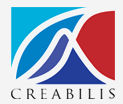CONTEXT:We developed a rechallenge cytotoxic assay that mimics repetitive in vivo immune effector cell (IEC; T and NK) interactions with target cells that can be used for the optimization, comparison, and development of CAR-IEC therapies.
OBJECTIVE:To evaluate a target cell rechallenge platform that allows rapid and multiplex evaluation of CAR-IEC cytotoxicity, exhaustion, and persistence in vitro.
DESIGN:Four separate ROR1 constructs using different costimulatory domains were designed and optimized in silico. We developed a luciferase-based rechallenge cytotoxicity assay. We diluted the effector to target (E/T) ratio to obtain a logarithmic trendline of the cells' cytotoxicity. All were co-cultured with their targets at E/T ratios resulting in 70% cytotoxicity. After 24 hours, we estimated the remaining IEC amount in culture using GFP exclusion by FACS (IEC cells/mL = total cells/mL x GFP%). We repeated the plating of E/T ratio dilutions to obtain daily IC50 curves using this rechallenge platform for 5 days. We examined IEC exhaustion marker expression on days 0 and 5 by FACS.
RESULTS:All tested constructs showed specific cytotoxicity against ROR1-expressing cell lines. Third-generation (3G) constructs showed lower cytotoxicity levels after Day 1 of repetitive rechallenge compared with second-generation (2G) CARs. However, the cytotoxic activity of 3G constructs gradually increased during subsequent rechallenges and exceeded the cytotoxicity observed for 2G-CARs on Day 5 of the rechallenge by an order of magnitude. On Day 5, there were no significant differences in IEC subsets among the constructs, with a predominance of effector memory phenotypes (CCR7-, CD45RA-); however, in some cases, we observed the increased expression of PD-1, TIGIT, LAG-3, and TIM3 in the 2G constructs.
CONCLUSIONS:Our data shows the functionality of a repetitive in vitro target rechallenge platform for evaluating CAR-IECs. By performing repetitive cytotoxic challenges, we aim to mimic the dynamic in vivo interactions in the tumor microenvironment between IECs and target tumor cells. We propose to use the IEC50 calculated from this platform to evaluate the cytotoxic functionality, exhaustion, and persistence of different CAR-IECs in an efficient and cost-effective manner, which is suited for multiplexing and robotic optimization.






